Llanbadoc Discovery: Late Medieval Artifact And The Battle Of Usk
A. Sutherland - AncientPages.com - An interesting historical artifact in the form of a fragment of a late medieval mount was discovered in the vicinity of Llanbadoc, in Monmouthshire, the River Usk.
This late medieval silver inscribed mount, dating from more than 300 years ago, has been declared treasure by HM Coroner for Gwent © National Museum Wales
The 15th-century artifact inscribed with the words: "none this good" could have formed part of the grip of a sword lost by a knight near the River Usk.
The site is related to the 1405 Battle of Pwll Melyn, also known as the Battle of Usk.
This military encounter was part of the Welsh War of Independence against English rule that lasted from 1400 to 1415. The battle occurred in the spring, probably the 5th May of 1405, and the defeat of the Welsh rebels here was devastating.
It included the loss of influential leaders and men. A contemporary Welsh chronicle described it as a "slaughter": "It was now the tide began to turn against Owain and his men.."
Accidental Discovery Of The Artifact
The artifact was accidentally found near the River Usk in March 2014 by the metal detectorist, Michael Beirne, a Fabrication and Welding Engineering student at the Coleg Gwent City of Newport campus.
 Usk Usk Castle. Image credit: CastlesFortsBattles.co.uk
Usk Usk Castle. Image credit: CastlesFortsBattles.co.uk
A slightly concave curvature and an invocation to the Virgin (in Latin and Low German) - also seen on finger rings contemporary to the period - feature on the rivet-holed mount, found near Llanbadoc, Monmouthshire, and reported to the National Roman Legion Museum in Caerleon.
The silver mount bears two incomplete inscriptions against a recessed diagonally hatched background. There are two unfinished holes, suggesting that it once formed part of a composite object.
The surviving fragment that may have been part belonged to a Welsh or English knight represents half its original length, leaving room on the missing section for another short motto or an enameled shield of arms.
Usk was attacked in 1402 by the forces of Owain Glyndwr. He had capitalized on anti-English feelings amongst the Welsh and declared himself Prince of Wales. A further attack, aimed specifically at capturing the castle, was made in 1405. The town was burnt, but the castle held out.
Castle Oak pond, Usk This pond was originally excavated in the 1850s to provide water for the steam trains on the line between Little Mill and Monmouth. During the excavation skeletons were found believed to be those slain at the battle of Pwll Melyn in 1405 when Owen Glendower's forces were heavily defeated by those of Henry IV. The line was closed in 1955 by Lord Beeching. Despite now being totally surrounded by the Castle Oak housing estate the pond is home to a rare amphibian -the greater crested newt. Image credit: Roger Davies - CC BY-SA 2.0
However, the defenders, led by Lord Richard Grey of Codnor and Dafydd Gam, drove off the assault and routed the Welsh at the Battle of Pwll Melyn just a few hundred meters from the castle.
According to historian J. E. Lloyd, writing in 1933:
"Pwll Melyn . . . is the pond lying north-east of Usk Castle. . . numerous skeletons were found in this pond when it was cleaned out. The pond is so called because the water is always slimy and of a dirty colour. . . The 'pwll' itself is reduced in size, the marshy land drained, and the 'pwll' is now enclosed by an iron railing and supplies water to the railway. From the 'pwll,' the ground rises westward, and here Owen's army attacked the castle on the north. It is a well-known spot and the name has never been lost."
Casualties on the Welsh side were devasting; they lost 1500 men, according to some sources. According to Adam of Usk (c. 1352 – 1430), a Welsh priest, canonist, and late medieval historian and chronicler, three hundred prisoners were beheaded in front of Usk Castle following the battle.
Gruffudd ab Owain Glyndŵr (c.1375-c.1412), the disinherited Prince of the old Royal house of Powys Fadog who led a major revolt in Wales (1400 and c.1416), was captured and imprisoned in the Tower of London.
Owain's brother Tudur was killed in the field.
Updated on July 25, 2022
Written by – A. Sutherland - AncientPages.com Senior Staff Writer
Copyright © AncientPages.com All rights reserved. This material may not be published, broadcast, rewritten or redistributed in whole or part without the express written permission of AncientPages.com
Expand for referencesMore From Ancient Pages
-
 Largest Figurine Workshop Yet Discovered In The Maya World
Archaeology | Apr 30, 2019
Largest Figurine Workshop Yet Discovered In The Maya World
Archaeology | Apr 30, 2019 -
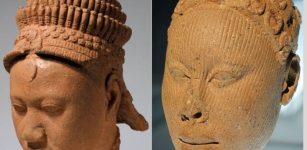 Ife Head: Significance Of The Head ‘Ori’ In Yoruba Ancient And Present Beliefs
Artifacts | Mar 27, 2019
Ife Head: Significance Of The Head ‘Ori’ In Yoruba Ancient And Present Beliefs
Artifacts | Mar 27, 2019 -
 Trajan’s Column – A Roman Triumphal Column In Ancient Rome
Ancient History Facts | Aug 31, 2021
Trajan’s Column – A Roman Triumphal Column In Ancient Rome
Ancient History Facts | Aug 31, 2021 -
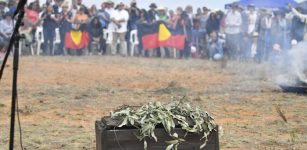 Mungo Man Finally To Rest In Peace After 42,000 Years – Reburial Approved After Federal Decision
News | Apr 8, 2022
Mungo Man Finally To Rest In Peace After 42,000 Years – Reburial Approved After Federal Decision
News | Apr 8, 2022 -
 Could Neanderthals Meditate? Scientists Investigate
Archaeology | Jun 30, 2022
Could Neanderthals Meditate? Scientists Investigate
Archaeology | Jun 30, 2022 -
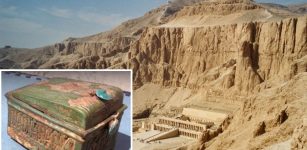 Discovery Of Camouflaged Ancient Stone Chest In Egyptian Temple May Reveal Hidden Royal Tomb – Who Is Buried Near Hatshepsut’s Temple?
Archaeology | Mar 10, 2020
Discovery Of Camouflaged Ancient Stone Chest In Egyptian Temple May Reveal Hidden Royal Tomb – Who Is Buried Near Hatshepsut’s Temple?
Archaeology | Mar 10, 2020 -
 Traditional Viking-Age Crafts: Glass Beadmakers And Their Secrets
Archaeology | Oct 4, 2022
Traditional Viking-Age Crafts: Glass Beadmakers And Their Secrets
Archaeology | Oct 4, 2022 -
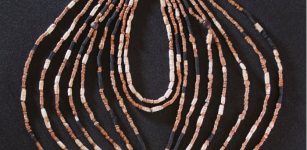 Beautiful Neolithic Ornate Necklace With Over 2,500 Stones Found In A Child’s Grave
Archaeology | Aug 2, 2023
Beautiful Neolithic Ornate Necklace With Over 2,500 Stones Found In A Child’s Grave
Archaeology | Aug 2, 2023 -
 Giant 7,000-Year-Old Astronomical Calendar Discovered In Poland?
Archaeology | Dec 22, 2017
Giant 7,000-Year-Old Astronomical Calendar Discovered In Poland?
Archaeology | Dec 22, 2017 -
 Nail Polish Was Used In 3,000 B.C. – Color Of Fingernails Indicated Social Status In Ancient China And Egypt
Ancient History Facts | Jan 11, 2018
Nail Polish Was Used In 3,000 B.C. – Color Of Fingernails Indicated Social Status In Ancient China And Egypt
Ancient History Facts | Jan 11, 2018 -
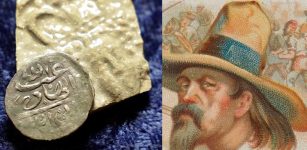 Can This Ancient Coin Solve The Mysterious Disappearance Of Pirate Henry Every?
Archaeology | Apr 1, 2021
Can This Ancient Coin Solve The Mysterious Disappearance Of Pirate Henry Every?
Archaeology | Apr 1, 2021 -
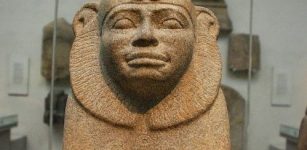 Taharqa – The Most Powerful Of The Black Pharaohs
Featured Stories | Jan 29, 2016
Taharqa – The Most Powerful Of The Black Pharaohs
Featured Stories | Jan 29, 2016 -
 Major Discovery Reveals Neanderthals In Italy Engaged In Plant Food Processing
Evolution | Jun 29, 2023
Major Discovery Reveals Neanderthals In Italy Engaged In Plant Food Processing
Evolution | Jun 29, 2023 -
 4,500-Year-Old Row Of Giant Monoliths Found – Could Be the Largest In Britain
News | Sep 7, 2015
4,500-Year-Old Row Of Giant Monoliths Found – Could Be the Largest In Britain
News | Sep 7, 2015 -
 Dropa Stones: Did A 12,000 Year-Old Extraterrestrial Spaceship Crash On Earth?
Featured Stories | Oct 2, 2015
Dropa Stones: Did A 12,000 Year-Old Extraterrestrial Spaceship Crash On Earth?
Featured Stories | Oct 2, 2015 -
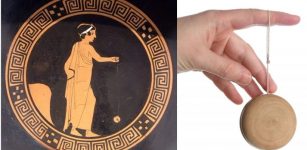 Oldest Yo-Yo Dates Back To 400-500 B.C
Ancient History Facts | May 13, 2019
Oldest Yo-Yo Dates Back To 400-500 B.C
Ancient History Facts | May 13, 2019 -
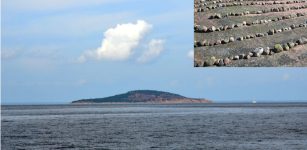 Sweden’s Blue Maiden ‘Blåkulla’ Island – Mythical Place With Dark Secrets Of Witches And Wizardry
Places | Sep 23, 2015
Sweden’s Blue Maiden ‘Blåkulla’ Island – Mythical Place With Dark Secrets Of Witches And Wizardry
Places | Sep 23, 2015 -
 DNA Study Reveals 250 Siberians Became The First Native American Population
Archaeology | May 12, 2018
DNA Study Reveals 250 Siberians Became The First Native American Population
Archaeology | May 12, 2018 -
 North America’s First People May Have Arrived By Sea Ice Highway 24,000 Years Ago
Archaeology | Dec 16, 2023
North America’s First People May Have Arrived By Sea Ice Highway 24,000 Years Ago
Archaeology | Dec 16, 2023 -
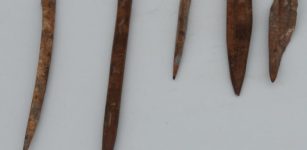 8,200-Year-Old Needles Unearthed In Turkey’s Izmir
Archaeology | Jul 13, 2022
8,200-Year-Old Needles Unearthed In Turkey’s Izmir
Archaeology | Jul 13, 2022


